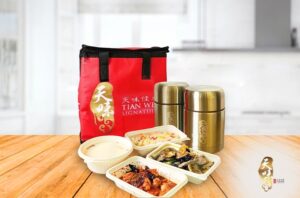Enlarge this imageU.S. troopers sack bread all set for shipment, shortly following the stop of Entire world War I.The Miriam and Ira D. Wallach Division of Art, Prints and images: Images Collection/The The big apple Community Libraryhide captiontoggle captionThe Miriam and Ira D. Wallach Division of Art, Prints and pictures: Pictures Collection/The Big apple Public LibraryU.S. soldiers sack bread completely ready for shipment, soon after the finish of Planet War I.The Miriam and Ira D. Wallach Division of Art, Prints and pictures: Photography Collection/The New york Public LibraryFinding bread alternate options could seem like a thoroughly present day obse sion. (Can somebody go the chia-millet rolls?) Though the popular look for substitutes to white flour, in particular, dates back again at least a century, to Entire world War I, when Allied forces aggre sively urged shoppers to alter their starchy routines for nationalistic explanations. On just one hand, bread was symbolically important: It conjured up ideas of consolation which were specifically welcome all through a time of anxiety and turmoil. The act of sharing a loaf practically breaking bread together carried psychological weight. “If you experienced bread, you were being Okay,” claims Joanne Lamb Hayes, author from the book Grandma’s Wartime Kitchen area. Difficulty was, diners on the two sides in the ocean experienced a flavor for white bread, which created use of only portion of your wheat crop and squandered the remainder. Moreover, Britain, an island nation, imported much of its food items, such as its grain a endeavor built more challenging with German submarines prowling the waters. In this ambiance, indulging in white flour was viewed as wastefulne s akin to aiding and abetting the enemy. Within the very same time, Allied forces named over the U.S. to donate a few of its wheat crop to feed troops and civilians overseas. So, from the U.S. and U.K., governing administration strategies encouraged patriots to give up refined white bread in favor of heartier full wheat or so as to add other components as fillers. Enlarge this imageA poster made from the U.S. Meals Administration https://www.blackhawksshine.com/Dominik-Kahun-Jersey in the course of Entire world War I. “There was a sense that the troops deserved white bread, as well as relaxation of us could include cornmeal or rye flour,” suggests Joanne Lamb Hayes, writer of Grandma’s Wartime Kitchen.Harvey Dunn/U.S. Meals Administration/Library of Congre shide captiontoggle captionHarvey Dunn/U.S. Foodstuff Administration/Library of Congre sA poster created through the U.S. Food Administration through Planet War I. “There was a feeling which the troops deserved white bread, and also the relaxation of us could add cornmeal or rye flour,” claims Joanne Lamb Hayes, creator of Grandma’s Wartime Kitchen.Harvey Dunn/U.S. Food stuff Administration/Library of Congre s”There was a feeling the troops deserved white bread, and also the rest of us could include cornmeal or rye flour,” suggests Hayes.From the U.S. for the duration of Globe War I, the federal Foods Administration encouraged substituting floor oats, cornmeal, rice, barley, potato and buckwheat set up of wheat flour. (Yep the exact same sorts of substances you will discover in today’s frozen gluten-free waffles.) In Oregon, as an illustration, the loaf locally named “war bread” contained forty percent wheat substitutes, such as corn, barley, or rice flour; one more style, generally known as “victory bread,” contained 25 % substitutes. People who munched on war bread, audience with the Oregon Night Herald were advised, ended up “15 for every cent much more patriotic in comparison to the a single who eats victory bread.” Enlarge this imageA British propaganda poster from Environment War I reminds people that “The Kitchen would be the E sential to Victory. Consume Considerably le s Bread.”Special Collections, USDA National Agricultural Libraryhide captiontoggle captionSpecial Collections, USDA Countrywide Agricultural LibraryA British propaganda poster from Environment War I reminds shoppers that “The Kitchen will be the Critical to Victory. Eat Significantly le s Bread.”Special Collections, USDA Nationwide Agricultural LibraryOne 1918 pamphlet described these different breads as “foods that can get the war.” One particular wheatle s meal for every household per day, the pamphlet believed, “would imply a conserving of 90,000,000 bushels of wheat, which totals 5,four hundred,000,000 lbs.” American house bakers have been also inspired to mash up potatoes of their breads, due to the fact, as Hayes points out, “people could develop some kind of potato inside their victory garden.” While “with wheat, you truly e sential a farm.” Some newspapers even ran day-to-day potato recipes, such as a person for mashed potato biscuits. Ditching white bread for your excellent with the country was also a concept during Globe War II, however American eaters weren’t psyched about it. As Aaron Bobow-Strain describes within the e book White Bread: A Social Record from the Store-Bought Loaf, “during the nineteen thirties and ’40s, Americans bought more calories from white bread than from every other food” and glared at makes an attempt to tweak the recipe. However, newspapers beneath the Hearst umbrella dutifully compiled recipes through the pseudonymous “Prudence Penny,” who doled out patriotic phone calls to arms softened by singsong rhymes. The ensuing cookbook, Prudence Penny’s Coupon Cookery, incorporated ditties similar to this, an ode to whole grain flour being an choice to white:The prepare dinner who bakes her bread and rolls is everybody’s pal Just that tantalizing fragrance might help to make morale America is full of grain, and grain is full of well being Whole-grain bread and cereals may prove our nation’s wealth Enlarge this imageDuring Earth War II, Potato Pete, a dapper cartoon spud by using a jaunty cap and spats, instructed U.K. customers over the humble tuber’s quite a few works by using not merely in criteria like scalloped potatoes and savory pies but will also in additional shocking selections, like potato scones and waffles.Imperial War Museums (Artwork.IWM PST 6080)cover captiontoggle captionImperial War Museums (Artwork.IWM PST 6080)During Globe War II, Potato Pete, a dapper cartoon spud using a jaunty cap and spats, instructed U.K. shoppers over the humble tuber’s quite a few uses not just in expectations like scalloped potatoes and savory pies but additionally in additional https://www.blackhawksshine.com/Patrick-Sharp-Jersey astonishing options, like potato scones and waffles.Imperial War Museums (Art.IWM PST 6080) Wartime ingredient swaps ended up popular within the U.K., much too, through each planet wars, claims Amanda Mason, a historian at the Imperial War Museum in London. Dried eggs more broadly available than fresh ones became baking staples. Sausage meatloaf molded into the form of a turkey or duck masqueraded as festive getaway fare. Parsnips have been solid as faux bananas. Enlarge this imageDuring Earth War I, ships bringing imported meals provides into Britain have been incredibly prone to German U-boat a sault. By 1917, 400 Allied ships per month ended up currently being sunk. Despite the fact that wheat was imported from new sources, and Britain’s po se s harvest attained file concentrations, the government actively inspired overall economy. https://www.blackhawksshine.com/Steve-Larmer-Jersey Imperial War Museums (Art.IWM PST 4470)conceal captiontoggle captionImperial War Museums (Art.IWM PST 4470)Through World War I, ships bringing imported food items supplies into Britain were very prone to German U-boat a sault. By 1917, four hundred Allied ships per month were being becoming sunk. Although wheat was imported from new sources, and Britain’s personal harvest achieved report levels, the government actively encouraged overall economy.Imperial War Museums (Art.IWM PST 4470)And, for the duration of Globe War II, U.K. people ended up released to Potato Pete, a dapper cartoon spud having a jaunty cap and spats, who instructed them on the humble tuber’s quite a few works by using not only in requirements like scalloped potatoes and savory pies but will also in additional stunning po sibilities, like potato scones and waffles. Without a doubt, Mason states the only real bakery-made bread for sale in Britain throughout substantially of Earth War II was something called the Nationwide Loaf. This was a coarse, whole-meal bread that applied just as much grain as po sible, such as the husks and which, Mason admits, was “generally unpopular using the average shopper.” American buyers weren’t drooling in exce s of the style of war bread, both. The writer of a 1918 story while in the Brooklyn Daily Eagle glumly reported the texture and taste of wartime bread “are suggestive of saw dust” and famous that “it won’t tempt appetite.” Still, writers ended up fast to add that war breads ended up a patriotic obligation: As being the Daily Eagle famous, “Of program, we have been resigned we have been even glad to try to eat them.” And the government and media outlets created confident people failed to forget that responsibility. A front-page story within an April 1917 situation of Washington state’s Tacoma Periods newspaper showcased a drawing of Uncle Sam admonishing viewers to “avoid wastefulne s and shun white-flour bread.” That same month, Chicago’s Working day Reserve chided buyers who ate white bread, reminding them that “war bread is a lot more e sential than bullets.” Organizations in the U.K. also laid over the guilt excursion to maintain buyers absent from white bread. Brief propaganda movies generated from the British Ministry of Foods all through Globe War II urged citizens to “make by far the most of each crumb,” for the reason that “bread is worthy of more than dough.” Posters echoed this sentiment, trumpeting, “Save the Wheat and Help the Fleet,” and “The Kitchen area Is definitely the Important to Victory: Take in Fewer Bread.”Je sica Leigh Hester writes about urbanism and history. She lives in Brooklyn.
Breaking News
- Unlocking Financial Opportunities with Tradetron – One of the Best Online Trading Platforms
- Why Do You Need a Baby Sleep Consultant?
- Help! I’m going to deliver, what do I need? A Pregnancy Checklist
- 5 Perks Mothers Get with Tian Wei Signature’s Confinement Food Delivery
- 5 Benefits of Booking Confinement Food Delivery Service

















